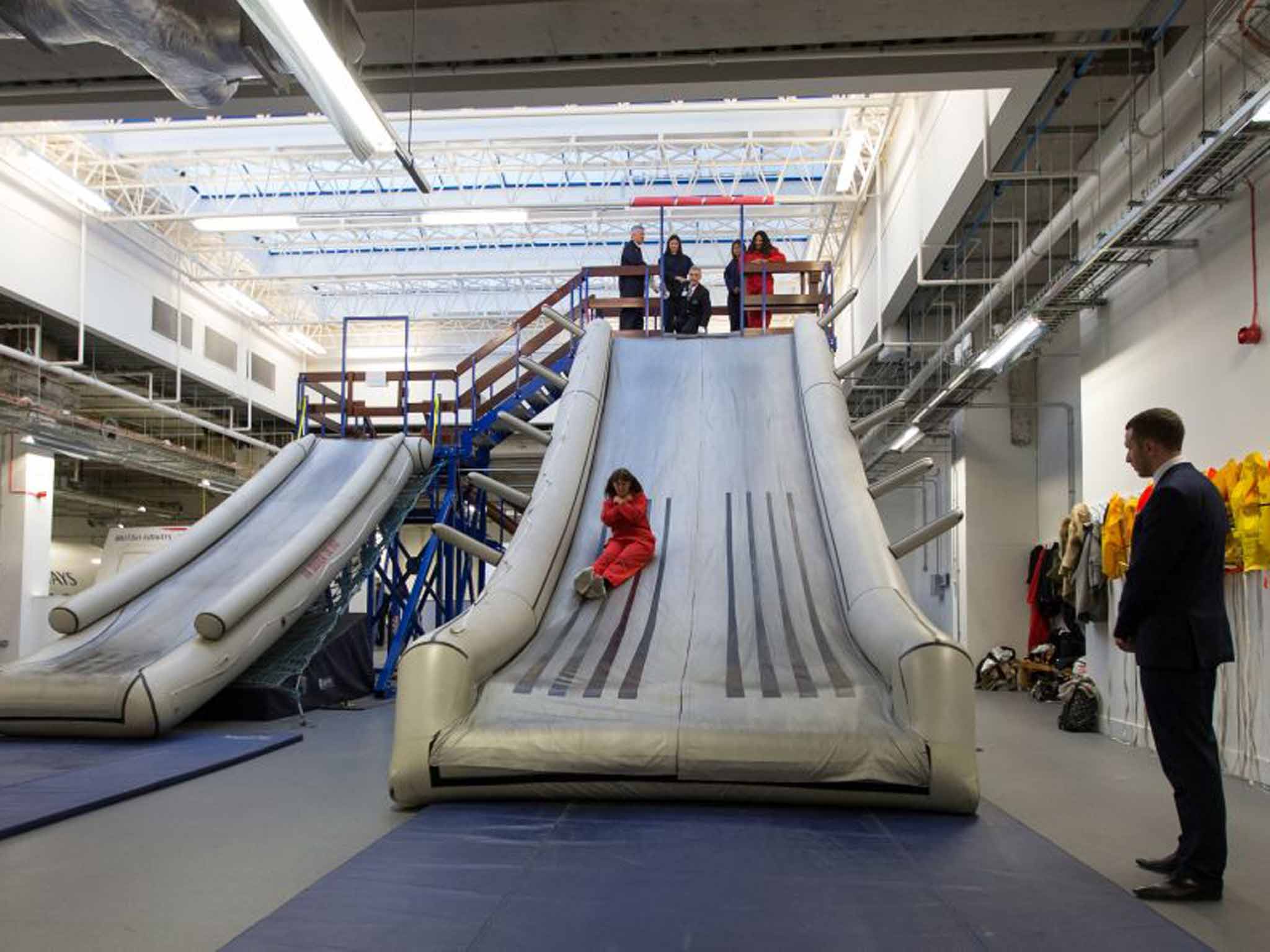Cabin crew: There’s serious training behind that welcome smile
The perfectly turned cravats and flawless hair belie rigorous training in not just service but safety and medicine, from fainting to heart attacks and childbirth

First impressions are important, but they can also be misleading. As you board a flight, you’re probably more interested in the context of your seating than the cabin crew. You may register them only fleetingly as immaculately turned-out representatives of the airline, pointing you in the direction of your seat.
What you are probably less aware of is that those sweetly-smiling greeters are sizing you up: do you look unwell? Have you had too much to drink? And perhaps most importantly, could you assist them in an emergency?
Such behind-the-scenes intelligence was revealed when, earlier this month, I spent a day at British Airways’ new state-of-the-art Global Learning Academy on the outskirts of Heathrow Airport, where the airline hopes to train a record number of new flying crew entrants this year. Occupying two vast buildings, this is where British Airways trains and retrains the majority of its 40,000 employees during up to 660 assessments per day.
Like a maitre’d or a hotel receptionist, cabin crew are our first and primary point of contact on a flight. Yet the perfectly turned cravats and flawless hair belie rigorous training in not just service but safety and medicine, from fainting to heart attacks and childbirth.
This was particularly palpable in one room where clusters of hopeful and existing crew were being taken through a series of emergency scenarios in segments of mocked-up cabins to an alarmingly repetitive mantra of “BRACE! BRACE!”. Those benign brand-reinforcers had turned steely safety enforcers, emphatically directing would-be passengers during door drills and emergency evacuations. There were crew in life rafts, jumping down inflatable slides, demonstrating the brace position, performing CPR in an aisle ... To my mind, the ambience was verging on stressful, but panic was conspicuous by its absence. In the unlikely and unfortunate event of an emergency, you’ll rely on crew to remain calm – no matter how serious the situation – and take charge of your safety.
And what of those men and women (though the latter are still under-represented in the industry) at the front of the plane? In a space-age hangar, a clinically sparkling row of 15 flight simulators are poised like multimillion-pound War of the Worlds Martian fighting machines, each configured according to the airline’s fleet, from the narrow-bodied Airbus A320 to the world’s largest commercial passenger aircraft, the Airbus A380. Here, 3,800 pilots take part in bi-annual training, refreshing their skills or getting acquainted with new aircraft in full-motion simulators, which are so realistic that new pilots could theoretically complete all their training in one without ever taking to the skies.
After having a go at taking off and landing at San Francisco airport (and veering dangerously off course, on what was mercifully a CGI runway), with considerable assistance, my education was complete. Aviation might retain much of the glamour of its golden years, but there’s a serious foundation that we passengers ought to pay closer attention to.
Join our commenting forum
Join thought-provoking conversations, follow other Independent readers and see their replies
Comments